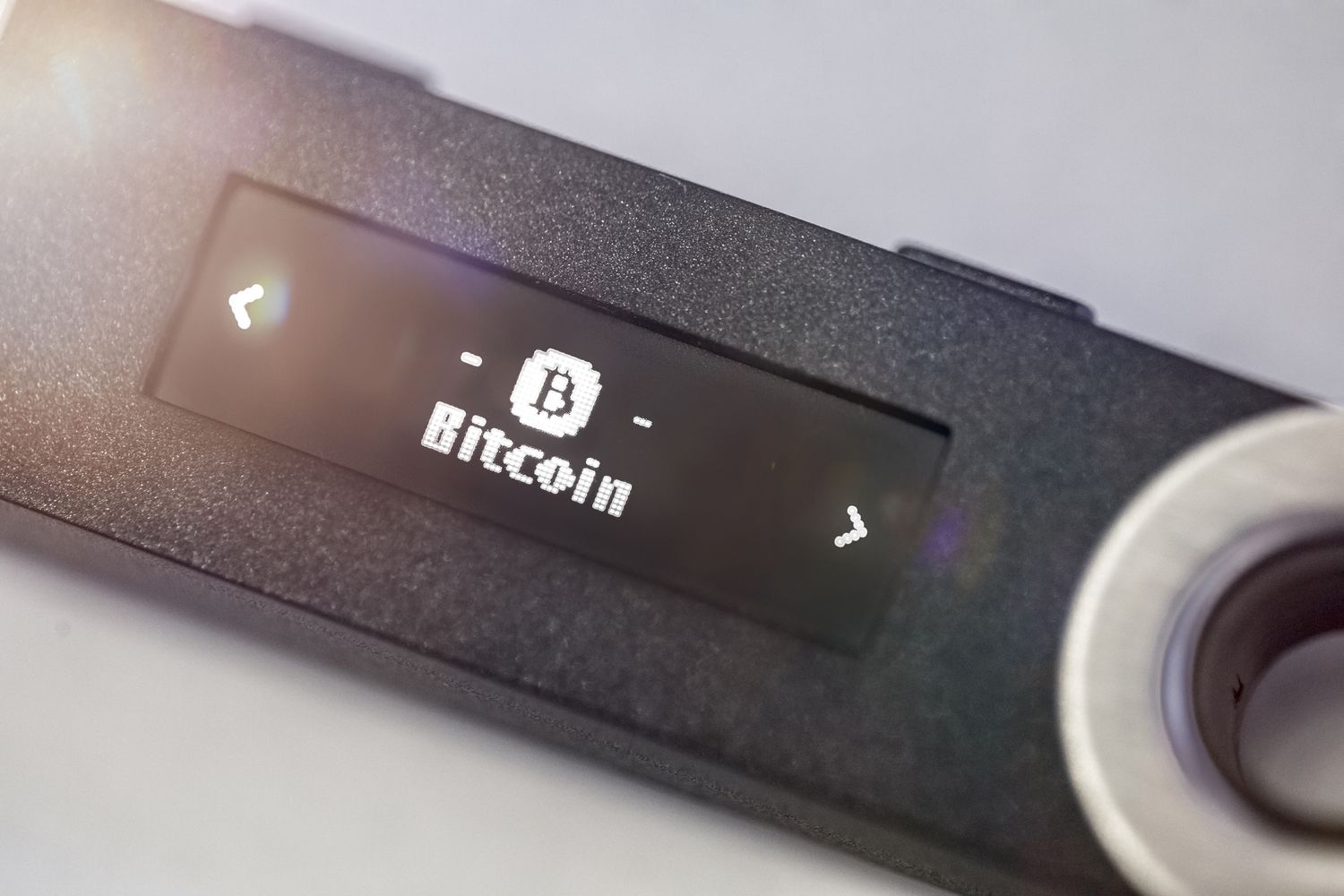Introduction
Digital currency has revolutionized the way we conduct financial transactions, offering convenience and security like never before. However, with every technological advancement comes the potential for vulnerabilities and hackers who seek to exploit them. In recent years, the rise of cryptocurrencies like Bitcoin and Ethereum has attracted the attention of cybercriminals looking for ways to hack into these digital currencies.
In this article, we will explore the various vulnerabilities of digital currency and how they can be hacked. Understanding these vulnerabilities is crucial for individuals and businesses alike, as it will help us take proactive measures to protect our digital assets.
Before diving into the vulnerabilities, let’s take a moment to understand what digital currency is. Unlike traditional physical currency, digital currency exists solely in electronic form and relies on encryption techniques to secure transactions and regulate the creation of new units. It operates on decentralized networks known as blockchains, which maintain a digital ledger of all transactions.
While digital currencies offer a high level of security, they are still susceptible to hacking attempts due to several factors. Hackers employ various techniques and exploit weaknesses in the system to gain unauthorized access to digital currency. Understanding these vulnerabilities is essential to safeguard against potential threats.
In the following sections, we will explore some of the most common vulnerabilities of digital currency and the techniques used by hackers to exploit them. By being aware of these risks, we can take steps to mitigate the chances of our digital currency being hacked.
Understanding Digital Currency
Before delving into the vulnerabilities and hacking techniques, it is essential to have a clear understanding of digital currency. Simply put, digital currency is a form of currency that exists solely in electronic or digital format. It is intangible and is primarily used for online transactions.
One of the defining features of digital currency is its reliance on advanced cryptographic techniques to secure transactions. Encryption algorithms are used to ensure the integrity, confidentiality, and authenticity of the currency’s transactions. This makes it highly secure and resistant to counterfeiting.
Digital currency operates on decentralized networks known as blockchains. A blockchain is essentially a public ledger that records all transactions made with the digital currency. These transactions are verified and confirmed by a network of computers, also known as nodes, distributed across the network.
Unlike traditional fiat currencies issued by central banks, digital currencies are not controlled or regulated by any central authority. This decentralized nature gives users greater control over their funds and eliminates the need for intermediaries such as banks.
One of the most well-known digital currencies is Bitcoin, which was created in 2009 by an anonymous person or group of people known as Satoshi Nakamoto. Bitcoin paved the way for numerous other digital currencies, collectively known as cryptocurrencies.
Each cryptocurrency has its unique characteristics and uses, but they all operate on similar principles. They provide users with a secure and efficient means of conducting online transactions without the need for traditional financial institutions.
It is worth noting that digital currencies are not limited to peer-to-peer transactions and online purchases. They can also be used for investment purposes, as the value of certain cryptocurrencies can fluctuate significantly over time. This aspect has driven many individuals and businesses to embrace digital currencies as a viable investment option.
Despite their advantages, digital currencies are not without risks. Hacking attempts and vulnerabilities can pose a threat to the security of these currencies. Understanding these vulnerabilities is crucial in order to protect your digital assets from potential hacking incidents.
The Vulnerabilities of Digital Currency
While digital currencies offer robust security measures, they are not immune to vulnerabilities that can be exploited by hackers. Understanding these vulnerabilities is crucial to taking proactive measures and safeguarding digital assets. Let’s explore some of the key vulnerabilities of digital currency:
- Phishing Attacks: Phishing attacks are a common tactic used by hackers to trick users into revealing their sensitive information such as login credentials or private keys. These attacks often involve fraudulent emails or websites that mimic legitimate platforms, leading users to unknowingly disclose their information.
- Malware and Keyloggers: Malware and keyloggers are malicious software that can be used to compromise the security of digital currency wallets. Once installed on a user’s device, they can record keystrokes and steal private keys or login credentials, allowing hackers to gain unauthorized access to digital assets.
- Social Engineering: Social engineering involves manipulating individuals into divulging sensitive information or granting access to their digital currency accounts. Hackers may impersonate trusted entities or use psychological manipulation techniques to deceive users into revealing their credentials.
- Distributed Denial of Service (DDoS) Attacks: DDoS attacks aim to overwhelm a network or website by flooding it with illegitimate traffic, causing it to become sluggish or unavailable. These attacks can disrupt the transactions and operations of digital currency networks, making them susceptible to hacking attempts.
- Insider Threats: Insider threats refer to attacks or vulnerabilities that stem from individuals within an organization. Insiders may exploit their privileged access to steal or manipulate digital currency, compromising the security and integrity of the system.
- Cryptocurrency Exchanges and Wallet Hacks: Centralized cryptocurrency exchanges and wallets present attractive targets for hackers. If these platforms have weak security measures or vulnerabilities, hackers can gain unauthorized access to user accounts and steal digital assets.
- 51% Attacks on Blockchain Networks: In blockchain networks, a 51% attack occurs when a single entity gains control of the majority of the network’s computing power. This enables the attacker to manipulate transactions, reverse transactions, or double-spend digital currency.
These vulnerabilities highlight the importance of implementing robust security measures and adopting best practices when dealing with digital currency. By being aware of potential risks, users can take steps to protect their digital assets and minimize the chances of falling victim to hacking attempts.
Phishing Attacks
Phishing attacks are one of the most prevalent and effective methods used by hackers to gain unauthorized access to digital currency. These attacks typically involve fraudulent emails, messages, or websites that appear to be from reputable sources, such as cryptocurrency exchanges or wallet providers.
The goal of phishing attacks is to trick users into disclosing their sensitive information, such as login credentials, private keys, or recovery phrases. Hackers create convincing replicas of legitimate platforms, making it difficult for users to distinguish between the real and fake ones.
Phishing attacks often employ techniques to create a sense of urgency or panic, pushing users to act quickly without thinking rationally. For example, an email might claim that there has been suspicious activity on a user’s account and prompt them to click on a link to resolve the issue.
To protect yourself from phishing attacks, it is essential to stay vigilant and follow these best practices:
- Verify the sender: Be cautious of emails or messages asking for sensitive information. Always double-check the sender’s email address or contact the organization directly to validate the legitimacy of the request.
- Be wary of suspicious links: Avoid clicking on any suspicious links, especially those received via unsolicited emails or messages. Hover over the link to verify the web address before clicking, as hackers often use deceptive URLs.
- Use Two-Factor Authentication (2FA): Enable 2FA whenever possible to add an extra layer of security to your digital currency accounts. This will require you to provide a secondary verification code when logging in, making it more difficult for hackers to gain unauthorized access.
- Keep software and devices up to date: Regularly update your operating system, web browsers, and antivirus software to ensure you have the latest security patches. Hackers often exploit vulnerabilities in outdated software to carry out phishing attacks.
Education is key when it comes to protecting yourself from phishing attacks. Familiarize yourself with common red flags, such as generic greetings, spelling and grammar errors, and urgent requests for personal information. By staying informed and employing caution, you can significantly reduce the risk of falling victim to phishing attacks and protect your digital assets.
Malware and Keyloggers
Malware and keyloggers are malicious software programs that pose a significant threat to the security of digital currency. Once installed on a user’s device, they can monitor and record keystrokes, allowing hackers to capture sensitive information such as login credentials, private keys, or wallet addresses.
Malware is typically spread through infected downloads, email attachments, or malicious websites. Keyloggers can be included within seemingly harmless files, making them difficult for users to detect. Once the malware infiltrates a user’s system, it can operate silently in the background, capturing keystrokes and sending the information to the hacker.
Protecting yourself from malware and keyloggers is essential to prevent unauthorized access to your digital currency. Here are some measures you can take:
- Install a reputable antivirus program: Use a reliable and up-to-date antivirus program that can detect and remove malware from your device. Regularly update the antivirus software to ensure that it can protect against new threats.
- Be cautious of software downloads: Only download software and applications from trusted sources. Avoid downloading files from unfamiliar websites or clicking on suspicious pop-up ads, as they may contain malware.
- Keep your operating system and applications updated: Regularly update your operating system and applications to ensure you have the latest security patches. Software updates often include fixes for known vulnerabilities that hackers can exploit.
- Use a hardware wallet: Consider using a hardware wallet or cold storage device to store your digital currency. These physical devices keep your private keys offline, minimizing the risk of malware or keyloggers obtaining them.
- Scan your device regularly: Perform regular scans with your antivirus program to detect and remove any malware or keyloggers that may have infected your system. Set up automatic scans to ensure consistent protection.
Additionally, practicing good online hygiene is crucial in preventing malware infections. Avoid clicking on suspicious links or downloading files from unverified sources. Be cautious of phishing attempts and carefully review emails or messages before interacting with them.
By taking proactive steps to protect your device from malware and keyloggers, you can significantly reduce the risk of unauthorized access to your digital currency and safeguard your valuable assets.
Social Engineering
Social engineering is a tactic used by hackers to manipulate individuals into divulging sensitive information or granting access to their digital currency accounts. Unlike traditional hacking methods that rely on exploiting technical vulnerabilities, social engineering attacks target human psychology and behavior.
Hackers often masquerade as trustworthy individuals or institutions and use psychological manipulation techniques to deceive their targets. They may pose as customer support representatives, friends, or even authority figures to gain the trust of their victims.
Common social engineering techniques include:
- Pretexting: Hackers create a plausible scenario or pretext to trick individuals into revealing sensitive information. For example, they may claim to be conducting a security check and request login credentials or private keys.
- Phishing: Phishing attacks, as discussed earlier, involve the use of fraudulent emails or messages to trick users into disclosing their sensitive information.
- Baiting: Baiting involves luring individuals with enticing offers or rewards in exchange for their personal information. This could include promises of free digital currency or exclusive access to privileged platforms.
- Impersonation: Hackers impersonate trusted entities, such as customer support representatives or friends, to gain the trust of their targets. They then exploit this trust to extract sensitive information or gain unauthorized access to digital currency accounts.
Protecting yourself against social engineering attacks requires being vigilant and following these practices:
- Verify the identity of individuals or institutions: When receiving requests for sensitive information or transactions, verify the legitimacy of the person or organization by using trusted contact information or directly contacting them through official channels.
- Exercise caution when sharing personal information: Be wary of providing sensitive information, such as login credentials or private keys, unless you are certain about the authenticity of the request.
- Beware of unexpected offers or rewards: Treat unsolicited offers with skepticism, especially those that seem too good to be true. Scammers often use enticing offers to lure individuals into sharing their personal information.
- Keep personal information private: Be cautious about sharing personal information on social media platforms or other public channels. Hackers can use this information to personalize their social engineering attacks and make them more convincing.
Ultimately, staying informed and adopting a skeptical mindset can help protect against social engineering attacks. Trust your instincts and be cautious of any requests for personal information, especially if they come from unexpected or unverified sources.
Distributed Denial of Service (DDoS) Attacks
Distributed Denial of Service (DDoS) attacks pose a significant threat to the stability and security of digital currency networks. These attacks involve overwhelming a network or website with a flood of illegitimate traffic, rendering it unavailable to legitimate users.
The goal of a DDoS attack is to disrupt the normal functioning of a digital currency network, preventing users from carrying out transactions or accessing their accounts. This creates an opportunity for hackers to exploit vulnerabilities or launch other types of attacks.
DDoS attacks can be executed through various means, including botnets, which are networks of compromised computers controlled by the attacker. These botnets are used to direct a massive volume of requests towards the targeted network, overwhelming its resources and causing it to slow down or crash.
To protect against DDoS attacks, digital currency networks and service providers employ various defensive measures, including:
- Network monitoring: Continuous monitoring of network traffic helps identify and filter malicious traffic patterns associated with DDoS attacks. This allows for timely response and mitigation.
- Load balancing: Distributing network traffic across multiple servers or data centers helps to prevent a single point of failure and ensures the network can handle increased traffic during DDoS attacks.
- Hardware firewalls and intrusion prevention systems: These security measures can help detect and block malicious traffic, minimizing the impact of DDoS attacks on the network.
- Content Distribution Networks (CDNs): CDNs help distribute network traffic across multiple servers located in different geographical regions, reducing the load on any single server and allowing for efficient handling of DDoS attacks.
- Anomaly detection and mitigation: Automated systems can analyze network traffic patterns and detect unusual behavior associated with DDoS attacks. They can then take proactive measures to mitigate the impact of the attack.
As a user of digital currency, it is crucial to ensure that the platforms and services you use have measures in place to protect against DDoS attacks. Choosing reputable and secure service providers can significantly reduce the risk of disruptions and safeguard your digital currency transactions.
Furthermore, keeping your own devices protected with up-to-date antivirus software and firewalls can help prevent your computer from being unwittingly used as part of a botnet for DDoS attacks.
By implementing robust security measures and collaborating with service providers that prioritize DDoS protection, the digital currency community can better defend against these disruptive attacks and maintain a stable and secure network for users.
Insider Threats
Insider threats are security vulnerabilities that arise from individuals with authorized access to sensitive information or systems. In the context of digital currency, insider threats can refer to employees, contractors, or individuals who have knowledge of and access to digital currency platforms or wallets.
Insider threats pose a significant risk as these individuals already have some level of trust and access within an organization. They can intentionally or unintentionally misuse their privileges, compromising the security and integrity of digital currency systems or wallets.
The motives behind insider threats can vary. Some individuals may be driven by financial gain, seeking to exploit the digital assets for personal profit. Others may have personal grievances or ideological motivations. In some cases, individuals may inadvertently compromise security due to negligence or lack of awareness.
Preventing insider threats requires a multi-layered approach that includes the following measures:
- Access control and authentication: Implement robust access control mechanisms to ensure that only authorized personnel have access to sensitive digital currency systems or wallets. Use strong authentication methods such as multi-factor authentication (MFA) to add an extra layer of security.
- Regular monitoring and auditing: Continuously monitor user activity within digital currency systems, identifying any suspicious or unauthorized actions. Conduct regular audits to review access permissions, detect anomalies, and identify potential insider threats.
- Education and awareness: Educate employees and contractors about the risks and consequences of insider threats. Raise awareness about the best practices for protecting digital currency systems and wallets, including the reporting of any suspicious activities or concerns.
- Separation of duties: Implement controls that prevent a single individual from having complete control over critical digital currency systems or processes. The principle of separation of duties ensures that no single person can execute a transaction or make significant changes without oversight or approval from others.
- Implement strict policies and procedures: Document and enforce clear security policies and procedures that define acceptable use, access, and incident response protocols. Regularly review and update these policies to align with evolving threats and industry best practices.
Trust is a vital component of any organization, but it must be balanced with robust security measures to mitigate insider threats. By combining technical controls, user awareness, and proactive monitoring, organizations can reduce the risk posed by insider threats and protect their digital currency systems and wallets.
Cryptocurrency Exchanges and Wallet Hacks
Cryptocurrency exchanges and wallets are central points of vulnerability in the digital currency ecosystem. These platforms serve as gateways for users to buy, sell, and store their digital assets. However, if these platforms have weak security measures or vulnerabilities, they can become targets for hackers seeking to steal users’ digital currency.
Wallet hacks are incidents where hackers gain unauthorized access to digital currency wallets, allowing them to transfer or steal the funds stored within. Cryptocurrency exchanges, on the other hand, can be targeted for direct attacks, where hackers breach the platform’s security to gain access to multiple users’ accounts.
There have been cases where significant amounts of digital currency have been lost due to exchange and wallet hacks, resulting in financial losses for individuals and damaging the reputation of digital currency as a whole.
There are several factors that contribute to the vulnerabilities of cryptocurrency exchanges and wallets:
- Insufficient security measures: Some exchanges and wallets may have inadequate security measures in place, making it easier for hackers to breach their systems. This can include weak password policies, lack of two-factor authentication (2FA), or poor encryption practices.
- Third-party integrations: Exchanges and wallets often integrate with third-party services, such as payment processors or plugins, to enhance functionality. However, vulnerabilities in these integrations can introduce additional points of weakness that can be exploited by hackers.
- Human error: Human error, such as misconfigurations or oversight in security protocols, can create vulnerabilities that hackers can exploit. It only takes one mistake for an attacker to gain unauthorized access to a cryptocurrency exchange or wallet.
- Internal threats: Insider threats, as discussed earlier, can also pose a risk to exchanges and wallets. Individuals with authorized access who misuse their privileges can compromise the security of the platform and users’ funds.
- Targeted attacks: Given the significant value of digital currency, exchanges and wallets can be targeted with sophisticated and targeted attacks. Hackers may employ various techniques, such as advanced phishing or social engineering, to gain access to sensitive information or exploit vulnerabilities.
To protect yourself when using cryptocurrency exchanges and wallets, consider the following best practices:
- Research reputable exchanges and wallets: Before using an exchange or wallet, thoroughly research its reputation, security practices, and track record in safeguarding user funds. Look for platforms that have implemented robust security measures and have a history of proactive measures against hacks.
- Enable two-factor authentication (2FA): Use 2FA whenever possible to add an extra layer of security to your exchange or wallet. This typically involves providing a secondary verification code during login or transactions, making it more difficult for hackers to gain unauthorized access.
- Keep your software up to date: Regularly update your operating system and applications, including your wallets and exchange platforms, to ensure that they are protected against known vulnerabilities.
- Use hardware wallets: Consider using hardware wallets, which store digital currency offline and provide an extra layer of security against online attacks. These physical devices keep your private keys secure and are not susceptible to hacking attempts targeting online platforms.
- Be cautious of suspicious links or emails: Exercise caution when clicking on links or opening emails related to cryptocurrency exchanges or wallets. Always verify the authenticity of emails, double-check the URLs, and avoid clicking on suspicious links.
By adopting these best practices and being selective about the platforms you use, you can reduce the risk of falling victim to cryptocurrency exchange and wallet hacks, thus protecting your valuable digital assets.
51% Attacks on Blockchain Networks
51% attacks represent a significant security vulnerability in blockchain networks, where an individual or group gains control of more than 50% of the network’s computing power. This level of control allows the attacker to manipulate transactions, reverse transactions, or even double-spend digital currency.
The name “51% attack” comes from the fact that the attacker needs to surpass the combined computing power of the rest of the network. Once they achieve majority control, they can alter the blockchain’s history and create new blocks that suit their malicious intent.
To understand the impact of a 51% attack, it’s crucial to recognize the decentralized nature of blockchain networks. The decentralized consensus mechanism, typically Proof of Work (PoW) or Proof of Stake (PoS), relies on the majority of participants operating honestly. But if a single entity controls the majority, the network’s security is compromised.
51% attacks can have severe consequences, including:
- Double-spending: With majority control, an attacker can spend their digital currency and simultaneously reverse the transaction, making it seem like they still possess the funds. This allows them to effectively use the same funds multiple times.
- Blockchain reorganization: An attacker can rewrite the blockchain’s history, altering past transactions and creating a new version of the blockchain. This can lead to the erasure of valid transactions and the issuance of conflicting or fraudulent transactions.
- Loss of trust and credibility: Public confidence in the blockchain network can be significantly undermined if a successful 51% attack occurs. Users may lose trust in the integrity and immutability of the network, impacting the value and adoption of the associated digital currency.
Preventing 51% attacks requires a combination of technical measures and community vigilance:
- Network decentralization: Promote a diverse and distributed network by encouraging participation from a large number of nodes and miners. This makes it more challenging for any single entity to achieve majority control.
- Consensus algorithm enhancements: Develop and implement consensus algorithms that are resistant to 51% attacks. Various mechanisms, such as Proof of Stake (PoS) and Delegated Proof of Stake (DPoS), aim to mitigate the impact of majority control.
- Increased network hashing power: By increasing the overall computing power of the network, it becomes more difficult for an attacker to control the majority. This can be achieved through mining hardware advancements and the participation of more miners.
- Vigilant community monitoring: Active engagement and monitoring by network participants can help detect and respond to potential 51% attacks. Open communication channels and transparent reporting can facilitate timely action to safeguard the network.
It is important to note that 51% attacks are relatively rare, especially on well-established and secure blockchain networks. However, being aware of this vulnerability and implementing countermeasures can help maintain the integrity and security of blockchain networks.
Preventing Digital Currency Hacks
While there may be vulnerabilities in digital currency systems, there are several proactive steps individuals and organizations can take to prevent digital currency hacks. By implementing robust security measures and best practices, we can significantly reduce the risk of falling victim to hacking attempts. Here are some key strategies for preventing digital currency hacks:
- Use strong and unique passwords: Create strong, complex passwords for your digital currency accounts and wallets. Ensure that each account has a unique password to minimize the risk of multiple accounts being compromised if one password is exposed.
- Enable two-factor authentication (2FA): Implement 2FA wherever possible to provide an extra layer of security. This requires users to provide a secondary verification code, typically generated through a mobile app or received via SMS, in addition to the password.
- Secure your devices: Keep your computers, smartphones, and other devices secure with up-to-date antivirus software and firewalls. Regularly update your operating system and applications to patch any security vulnerabilities.
- Encrypt your digital currency wallets: Ensure that your wallets are encrypted to secure your private keys and other sensitive information. Use hardware wallets or cold storage devices for added security and offline storage of your digital assets.
- Be cautious of phishing attempts: Stay vigilant and learn to spot phishing attempts, such as fraudulent emails or messages asking for personal information. Verify the authenticity of the request through official channels before disclosing any sensitive information.
- Regularly back up your wallets: Back up your digital currency wallets and store the backups in secure offline locations. This ensures that you have a copy of your private keys and can recover your funds in case of theft, loss, or hardware malfunction.
- Stay informed about security best practices: Follow trusted sources and stay updated on the latest security practices specific to digital currencies. Learn about new threats and vulnerabilities to better protect your assets.
- Research and choose reputable platforms: Prioritize using established and reputable cryptocurrency exchanges, wallets, and service providers. Research their security measures, track record in safeguarding user funds, and ongoing commitment to security improvements.
- Keep personal information private: Be cautious about sharing personal information related to your digital currency accounts on public platforms or with unknown individuals. Limit the exposure of information that hackers could potentially use to target you.
Preventing digital currency hacks requires a proactive and multi-layered approach. By combining strong passwords, 2FA, device security, encryption, and cautious online behavior, individuals and organizations can significantly reduce the risk of their digital currency being compromised.
It’s important to stay vigilant, continuously educate oneself about emerging threats, and adapt security measures accordingly. By taking these preventive measures, we can enjoy the benefits of digital currency while keeping our valuable assets secure.
Conclusion
As digital currency continues to grow in popularity, it is important to be aware of the vulnerabilities and threats that can compromise the security of these assets. In this article, we explored some of the common vulnerabilities and hacking techniques associated with digital currency, including phishing attacks, malware and keyloggers, social engineering, DDoS attacks, insider threats, cryptocurrency exchange, and wallet hacks, as well as 51% attacks on blockchain networks.
To protect against these hacking attempts, it is crucial to take proactive measures. Implementing strong passwords, enabling two-factor authentication, securing your devices, encrypting your wallets, being cautious of phishing attempts, regularly backing up your wallets, and choosing reputable platforms are some of the best practices that can greatly enhance the security of your digital currency.
Additionally, staying informed about emerging threats, maintaining up-to-date security measures, and fostering a vigilant mindset are essential for safeguarding your digital assets. Regularly review security policies and protocols, and be cautious when sharing personal information related to digital currency accounts. By adopting a multi-layered approach and practicing good online hygiene, you can minimize the risks associated with digital currency hacks.
However, it is important to note that no security measure is foolproof, and new hacking techniques may emerge over time. It is therefore crucial to remain vigilant and adapt your security practices as needed to stay ahead of potential threats.
By understanding the vulnerabilities of digital currency and implementing appropriate preventive measures, individuals and organizations can enjoy the benefits of digital assets while reducing the risks associated with hacking attempts. Embracing a proactive approach to digital currency security will help protect your valuable assets and contribute to the overall strength and trustworthiness of the digital currency ecosystem.

























